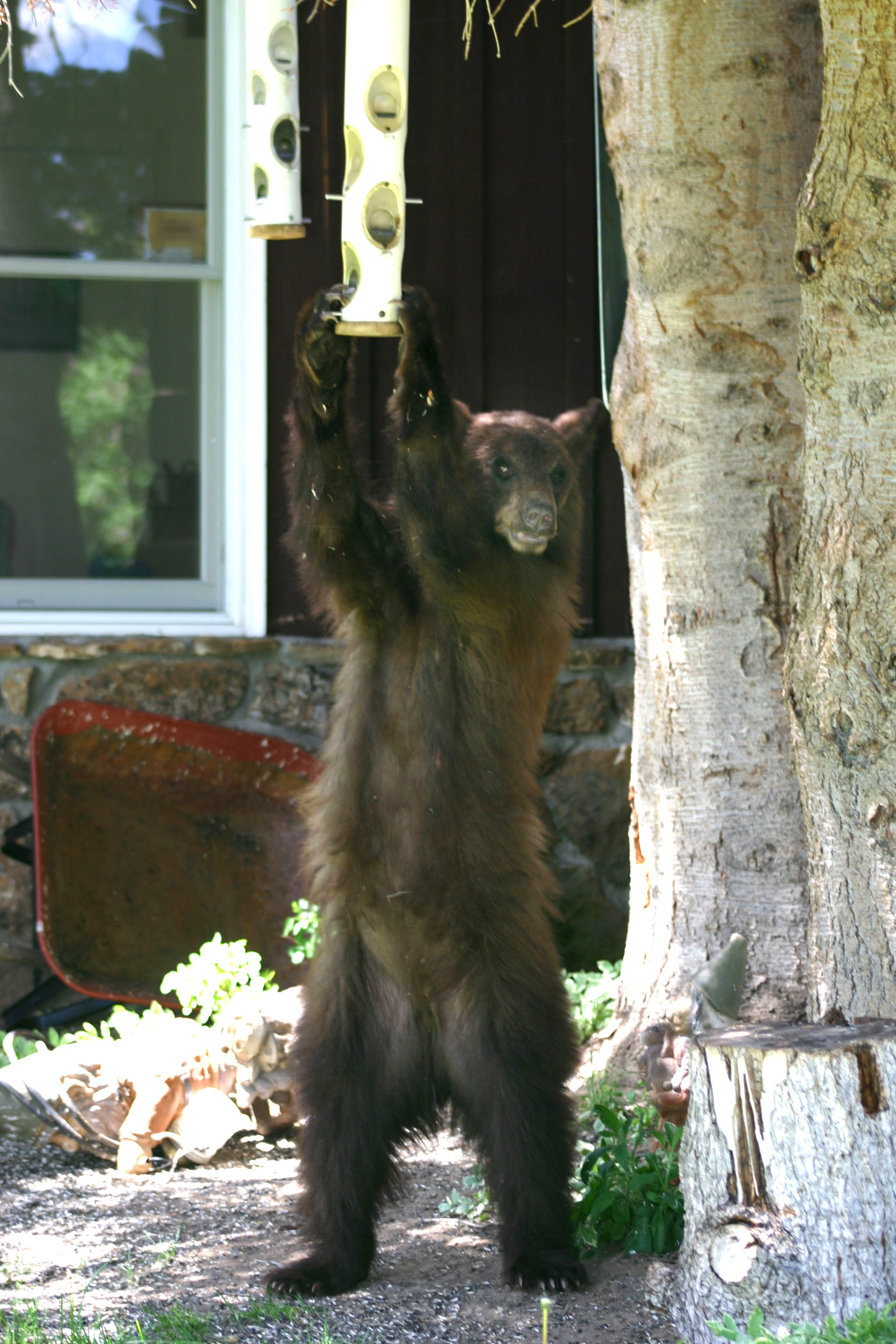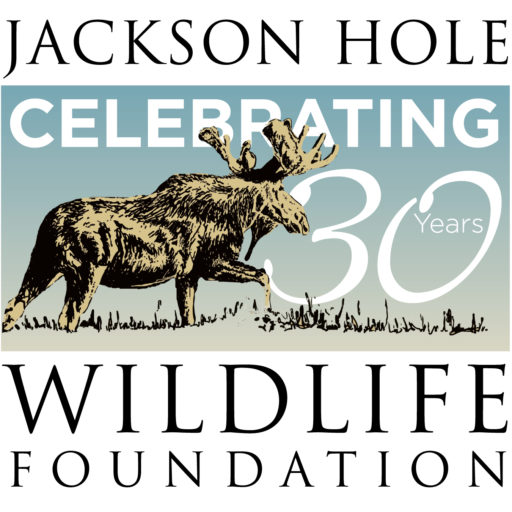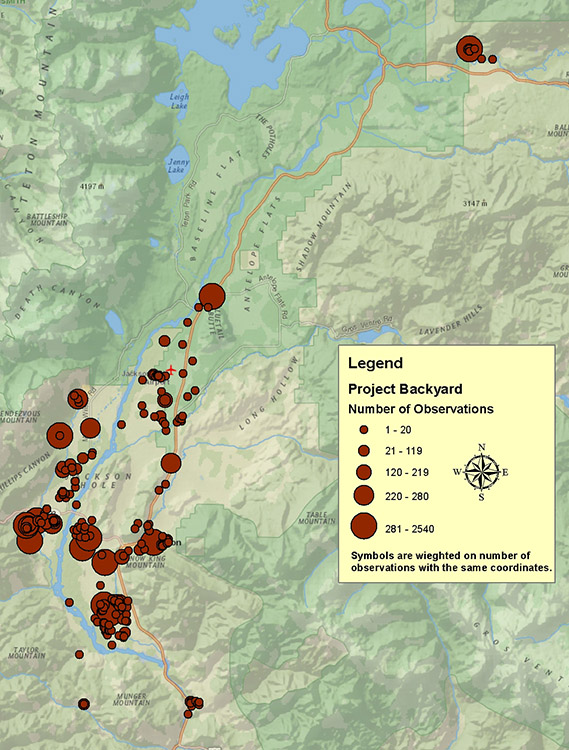The Challenge
Gathering information about backyard wildlife use in Teton County is extremely important. For example, during the winter months large ungulates are concentrated in the valleys and surrounding foothills where they are within and adjacent to developed areas. However, the Wyoming Game and Fish Department, which is responsible for estimating their numbers and distribution is unable to fly these areas due to safety and human disturbance issues. As a result, they have limited data in such areas, and backyard wildlife observations help fill this data gap. Although mammals are relatively common in many of the private and developed areas of Jackson Hole, there is little documentation about when and where they occur and their relative abundance.
The Solution
Nature Mapping Jackson Hole’s Project Backyard is increasing community knowledge of the kinds and distribution of wildlife that live in and around populated areas. This knowledge will help planners, resources managers, home owners associations, and valley residents make decisions that help people live compatibly with wildlife. This citizen science project is also helping to document the arrival and departure dates of migratory birds, rare species, unusual distributions, etc. And, maybe most importantly, the project is documenting the presence and numbers of common species. As stated by Bert Raynes, we hope to “keep common species common.”
Project Backyard 2015 Data
Thirty-three Nature Mappers entered over 3,115 observations into Project Backyard (PBY) in 2015. We have 258 PBY sites on the map. The protocol for PBY is for Nature Mappers to make observations from their property.
They record the highest count of a given species within each week of observation: for instance, the highest number of Pine Siskins, which can return several times to a feeder over the seven day period. This avoids counting the same individuals repeatedly.
Backyard observations are particularly valuable as they indicate what wildlife is living in, or moving through, our neighborhoods and when. This data can be used in educating neighbors on how to live with wildlife and in guiding new development. Also, it can give our community a heads-up on the expanding explorations of our larger wildlife on private lands. We in Jackson Hole are living on a new frontier: where carnivores are returning to the landscape now inhabited by people. How will we co-exist with wildlife? Nature Mappers can help with the answers.
2016 update: 2,033 Project Backyard observations have been entered as of October 25.
Record Your Backyard Project Observations
Log in to the Entry Form
If you’re a certified nature mapper, simply sign in to the Nature Mapping Entry Form via mobile or website.
Record Your Backyard Observation
Click on Backyard Project and record your observation. The application should fill your location automatically.
Add to the Body of Knowledge
The data you record go into a database that helps planners, resources managers, home owners associations and valley residents make decisions that help people live compatibly with wildlife.

Observing Wildlife In Your Backyard (Systematic Monitoring)
As a citizen science program, Nature Mapping Jackson Hole requires careful collection of data in order to maintain quality output. The following protocols are designed to assure that all participants collect data in a consistent manner. It is very important to follow these protocols and the Nature Mapping Jackson Hole motto: “When In Doubt, Leave It Out.” Remember, the data you collect have value only if they are accurate.
A bird feeder is not a requirement for gathering data about birds near your home. However, a bird feeder will attract birds, and helps facilitate opportunities for interesting observations (use caution if you live with or near outdoor housecats). To reduce chances of bears obtaining bird seed and becoming food conditioned (dangerous), remember to hang feeders at least 10 feet high and four feet from the trunk of a tree.
Protocols for Project Backyard
- Observations can be made throughout each week from around your home. Your observations need only be recorded once for the week, and it is acceptable to report them all on the final day of the week rather than having to report each observation by a different date and time.
- We suggest keeping a printed observation form or list nearby to record your running tally of species.
- Record each species only once per week with the highest number of individuals seen during that week.
- If you have a flock or a herd that comes frequently, count only the highest number of individuals seen at any one time. For instance, if you are counting pine siskins, and you see 12 individuals in your sampling area (your yard), and later you see 18 individuals, and still later you see 6 individuals, you will report 18 pine siskins.
- When you enter your observations online for the week, be sure to choose Backyard as the project.
- If you have entered the UTM coordinates for your home into your My Account information, they will be entered automatically when you choose the Backyard Project.

Please be sure that your bird feeders are safely out of the reach of bears.


